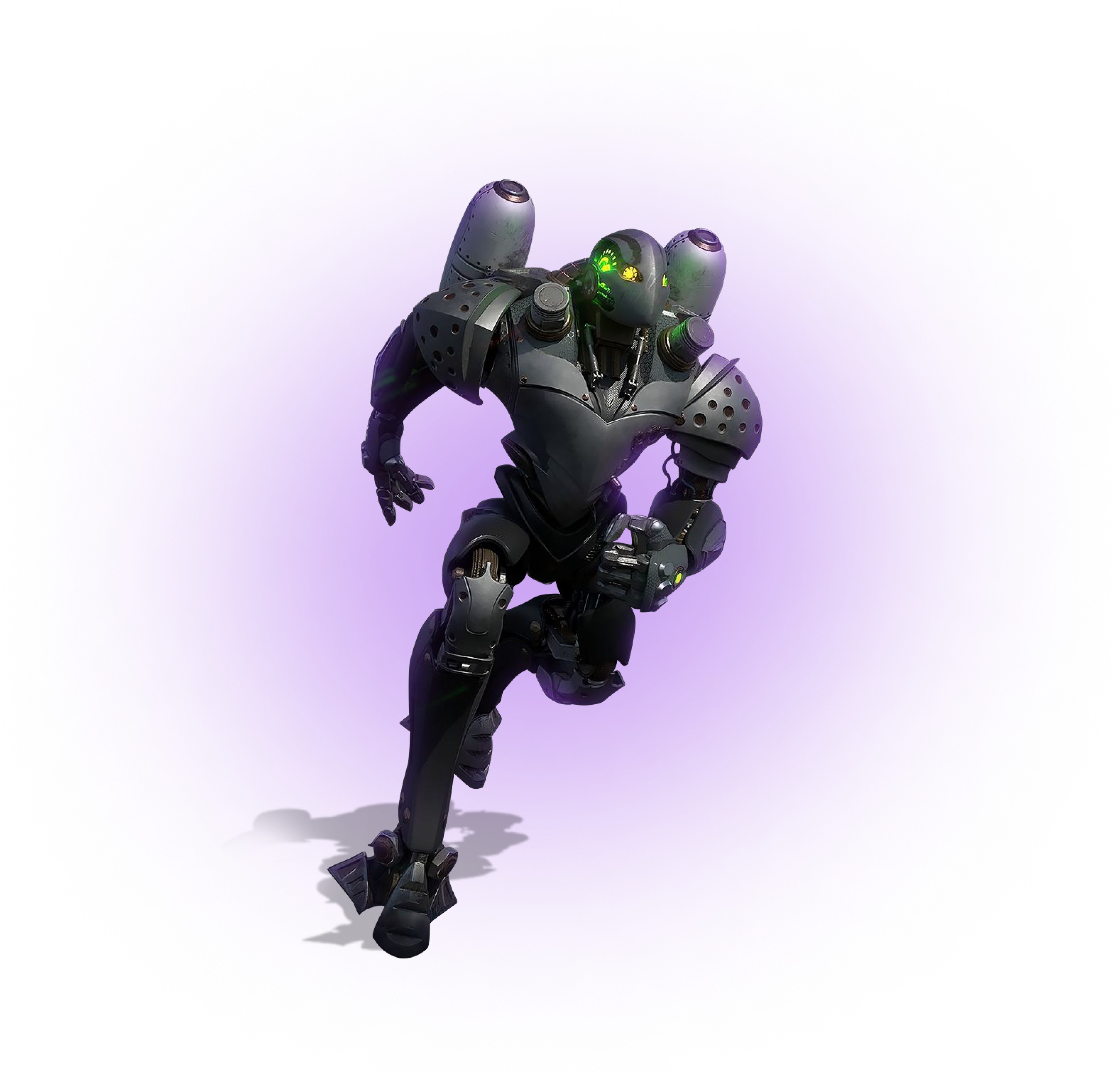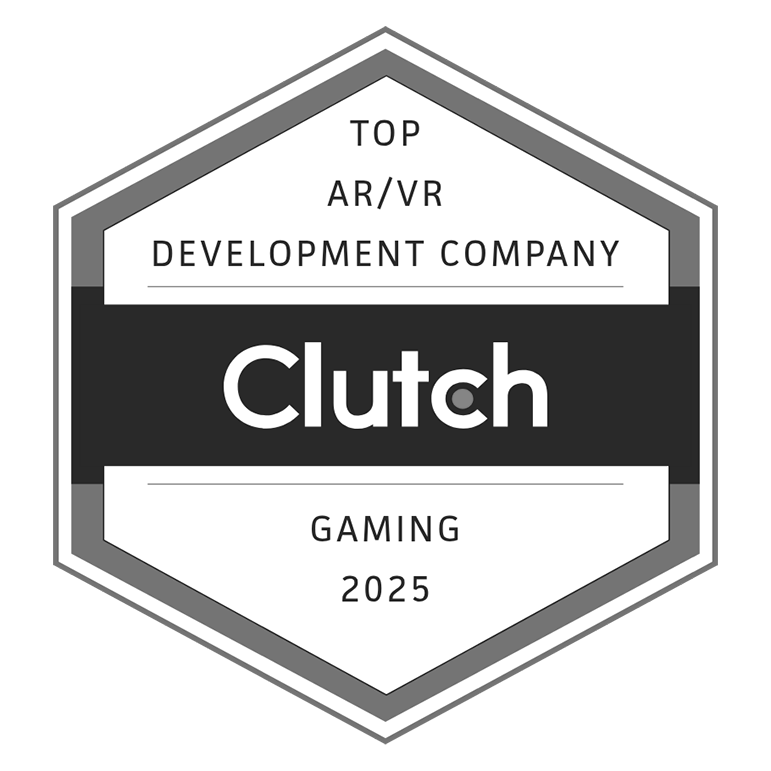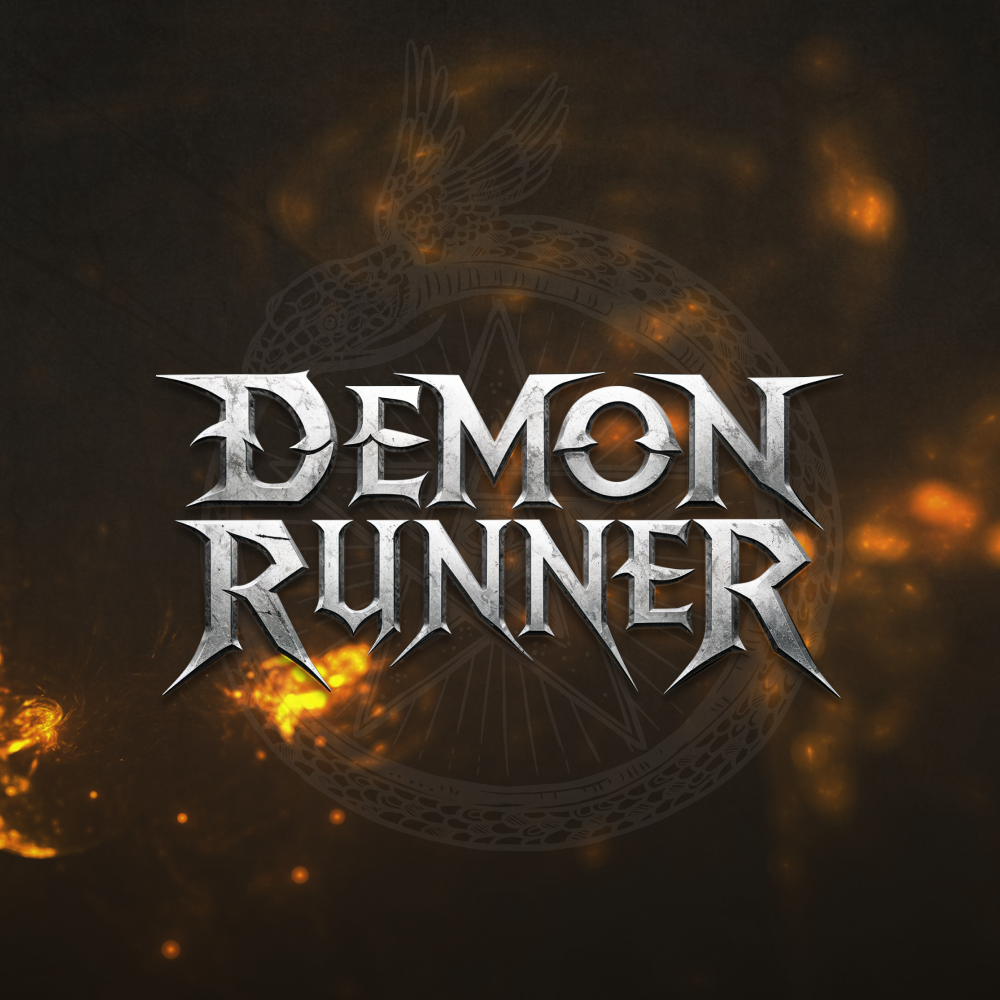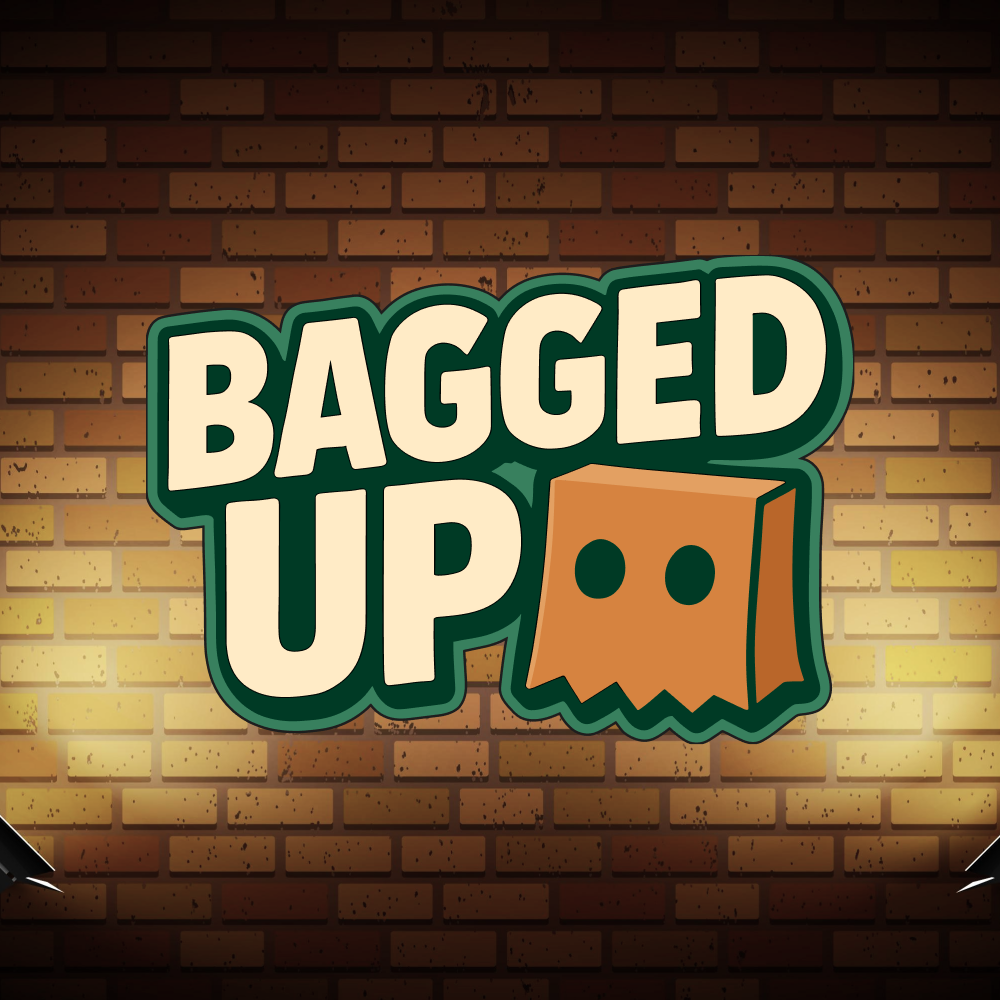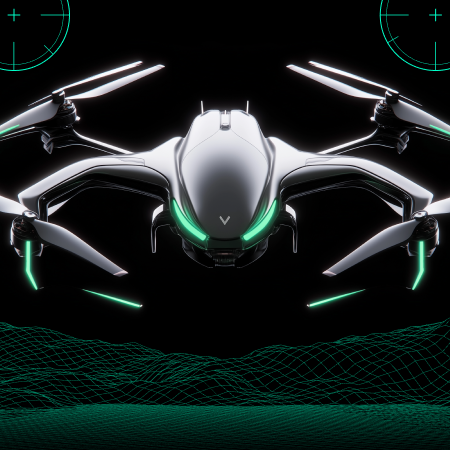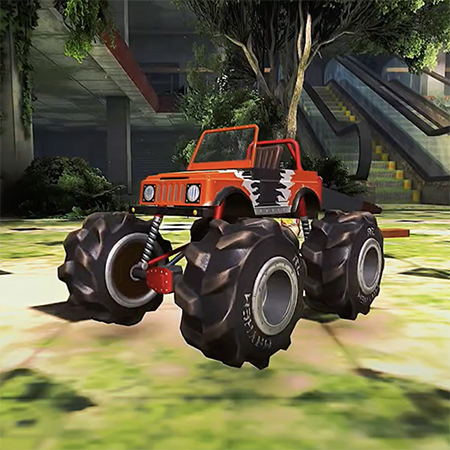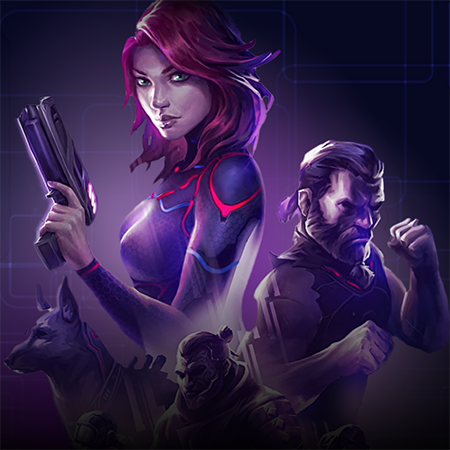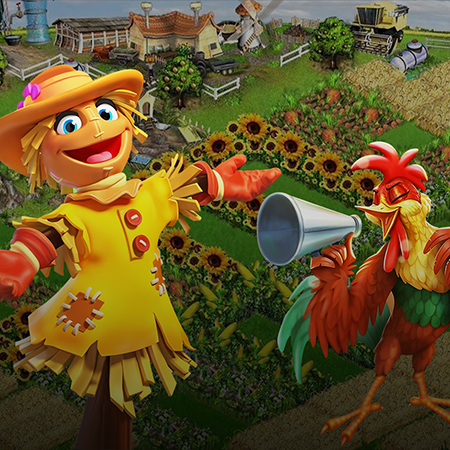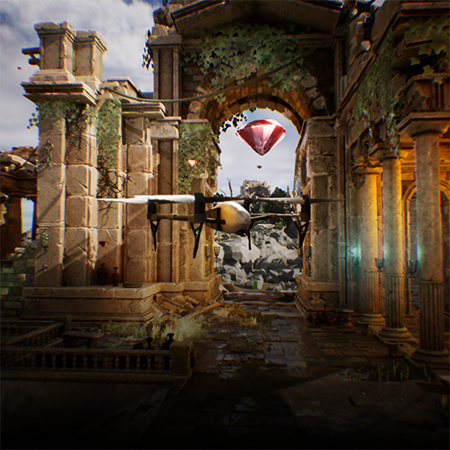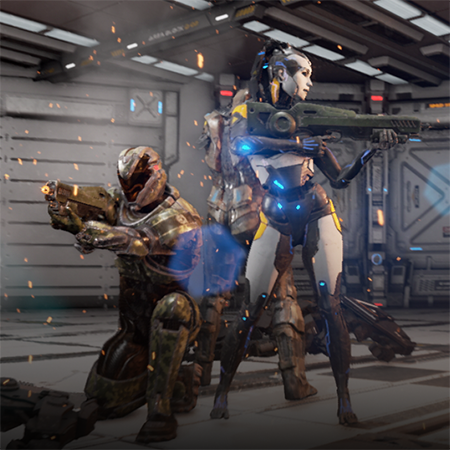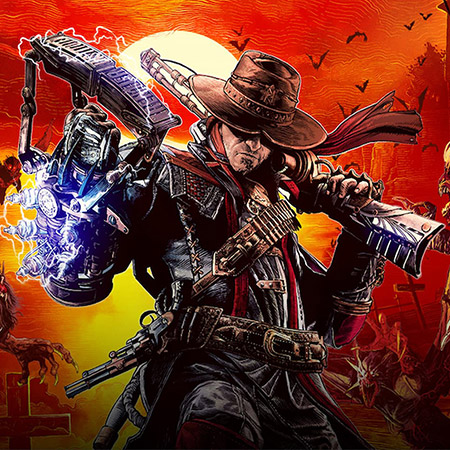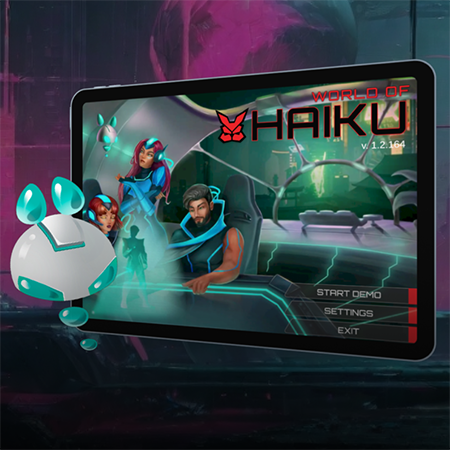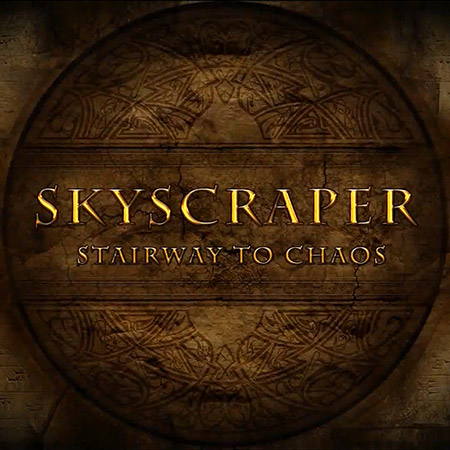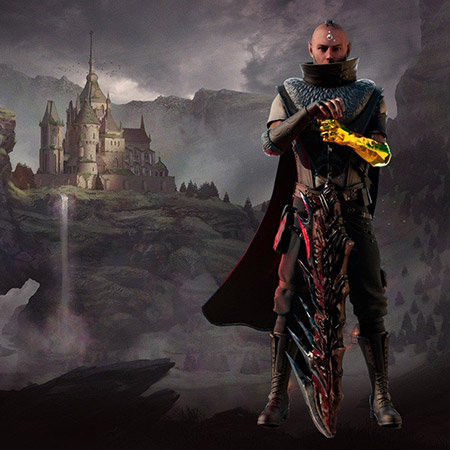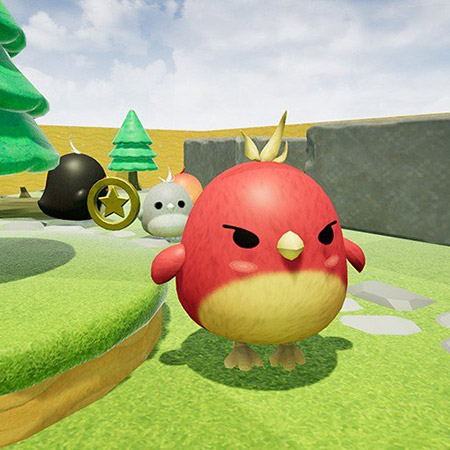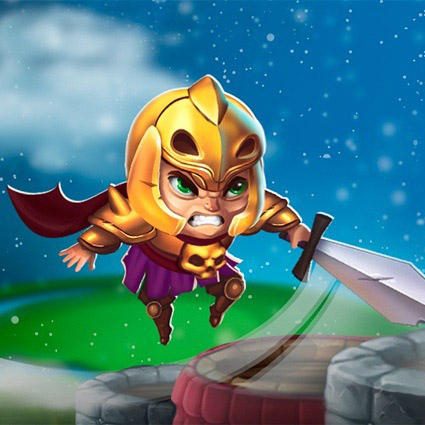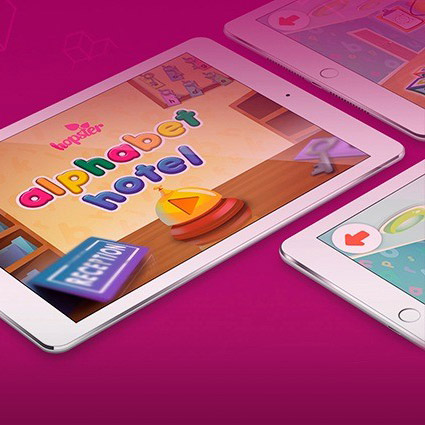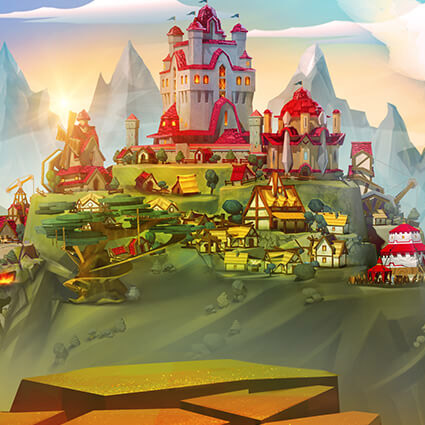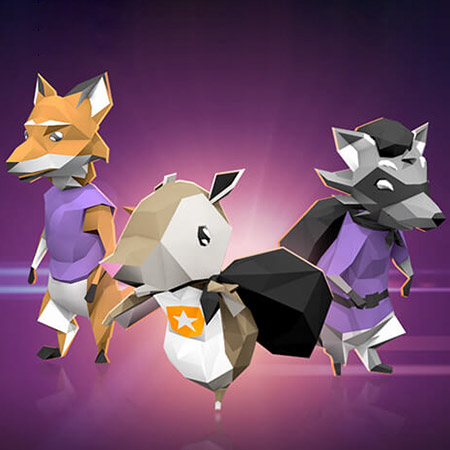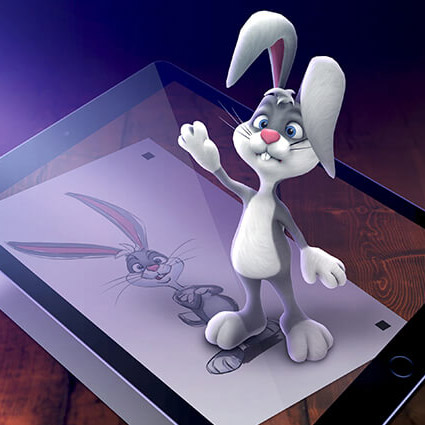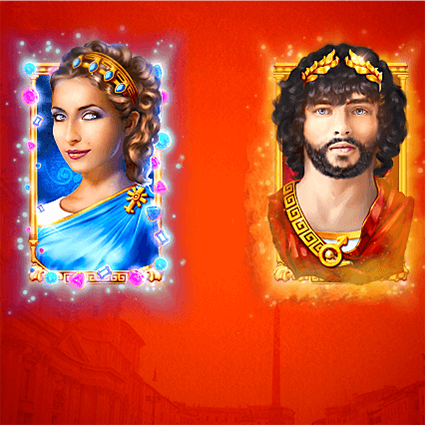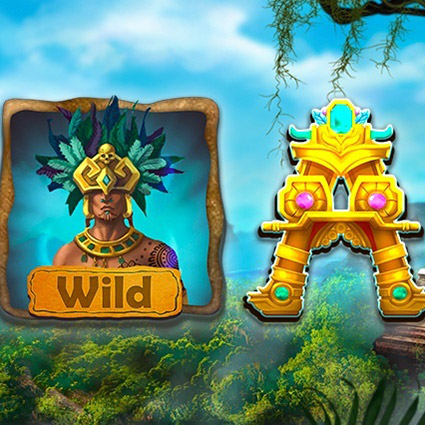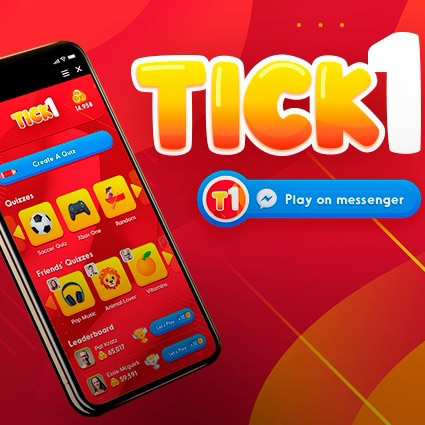Character rigging forms a crucial part of the animation process in video game development. Whether for 2D sprites or complex 3D models, rigging determines how characters move, interact, and express emotions. It involves creating the skeleton, defining joint movement, and ensuring seamless animation. Mastering both 2D and 3D rigging techniques is essential in game animation services to create captivating, smooth animations that meet gameplay requirements.
This article explores the techniques used in character rigging, highlighting the differences between 2D and 3D methods and how rigging enhances the storytelling and player experience. Read on to understand the challenges faced in the rigging process and how a game art outsourcing studio can help overcome them, ensuring top-tier animated characters for any project, regardless of its scale or genre. The right approach to rigging makes a significant difference in animation quality, supporting consistent movement and providing animators with the flexibility to bring characters to life effectively.
What Is Character Rigging in the Gaming Industry?
Character rigging is a process in video game development that involves creating a skeleton for 2D or 3D character models to define their movement. It is the foundational step before animation, allowing characters to move in a realistic manner. The rigging stage is crucial in 2D animation services to create smooth, expressive animations that perfectly align with the gameplay experience.
Rigging in gaming requires an understanding of both artistic and technical principles, as it bridges the gap between static character models and dynamic in-game action. Rigging is not just about adding a skeleton; it also involves setting up systems to automate movements, making animations more efficient. Whether for a simple character or a complex 3D model, rigging is what brings them to life and ensures consistency across different animation styles and requirements.
Exploring the Basics and Importance of Character Rigging
Character rigging forms the basis of animation in games, determining how 3D character models are rigged to achieve fluid and realistic movement. Rigging starts with creating a digital skeleton, which includes bones, joints, and controllers. Each bone represents a part of the character's body, and the joints determine how those parts are connected and can move. Controllers help animators manipulate these parts efficiently. In gaming, rigging is not only about making characters move but also about making them move in a way that enhances the player's experience. A poorly rigged character may appear stiff or unnatural, breaking the immersion.
A well-rigged character allows for natural expressions, accurate limb movement, and precise interactions with game objects and environments. Rigging also allows for flexibility in animation, making it possible to adjust poses and movements without starting from scratch. Whether a 2D character or a complex 3D model, rigging sets the foundation for how that character will interact within the game world, allowing developers to craft more engaging and dynamic experiences for players. When considering a 3D character, it’s essential to ensure they are properly rigged to perform various actions and interact realistically within the game environment.
Key Elements: Bones, Joints, and Controllers
Character rigging involves several key elements: bones, joints, and controllers. Bones are used to define the structure of the character model, representing the skeletal framework. Joints act as connection points between bones, dictating the movement capabilities of each part of the character. Controllers make it possible for animators to manipulate these joints and bones in a user-friendly way.
In the context of game environment modeling, rigging plays a vital role, as characters need to interact seamlessly with their surroundings. For instance, a character walking over uneven terrain requires rigging that allows realistic adjustments in foot positioning and balance. Joints enable a character to bend its limbs naturally, while controllers simplify the process for animators to achieve the desired poses and animations. Proper rigging provides the foundation for character interactions, determining the quality of animations and gameplay immersion.
- Bones provide structure. These define the overall form and movement capabilities of the character.
- Joints define connections. They control how bones are linked and can rotate or move.
- Controllers make animation manageable. They enable animators to pose and adjust movements easily.
Each component must be carefully designed to ensure the resulting animation appears smooth and engaging, directly impacting how the character feels within the game. A well-rigged character provides players with a more immersive experience, interacting with the game world believably and responsively. Game environment modeling greatly benefits from precise character rigging, as well-rigged characters add depth and interactivity to virtual spaces.
2D vs. 3D Character Rigging — Which One Fits Your Game?
| Criteria | 2D Character Rigging | 3D Character Rigging |
| Complexity | Typically less complex, involving fewer bones and joints to manipulate. | Significantly more complex, requiring a detailed skeleton structure with numerous joints to rig effectively. |
| Movement | Limited to flat, two-dimensional planes, such as horizontal or vertical motion. | Allows full 360-degree movement, encompassing rotation, scaling, and depth, making the animation far more dynamic. |
| Animation Style | Often stylized and simplistic, catering to specific art styles such as cartoons or pixel art. | Realistic animation is possible, with detailed movements and expressions that closely mimic real-world physics. |
| Suitable For | Ideal for 2D platformers, side-scrollers, mobile games, or indie titles with constrained budgets. | Best for immersive 3D games, AAA titles, VR, AR experiences, and simulations requiring intricate and realistic animations. |
| Cost & Time | Generally cheaper and quicker to complete, making it an excellent choice for projects with limited budgets or shorter timelines. | More expensive and time-consuming due to additional complexity, the requirement for advanced software, and higher levels of expertise. |
| Software Requirements | Requires lighter, often more accessible software like Spine, Moho, or Adobe Animate. | Needs more advanced software such as Autodesk Maya, Blender, or 3ds Max, suitable for professional-grade character rigging. |
| Target Audience | Often targeted toward casual gamers or those looking for a retro or unique art style. | Targeted towards gamers looking for immersive, high-quality visuals with realistic animations and interactions. |
Complexity Comparison: 2D vs. 3D Character Rigs
| Aspect | 2D Character Rig | 3D Character Rig |
| Bones Required | Minimal bone structure, often focusing only on essential limbs and joints like arms, legs, and head. | Complex skeleton structure involving multiple bones and segments to articulate different body parts, including hands, spine, and facial features. |
| Controllers Needed | Fewer controllers are required, making the setup process simpler for basic animations. | Needs numerous controllers to allow for a wide range of movement, from full-body actions to subtle facial expressions, ensuring precision in animation. |
| Joint Movement | Limited to simple rotations and linear movements, restricting the character's actions to 2D space. | Allows for complex joint articulation, enabling realistic movement, including bending, twisting, and other actions typical in real life. |
| Tools Used | Generally lighter software like Spine, Moho, or Adobe Animate, focused on simpler animation setups. | Advanced tools such as Autodesk Maya, Blender, or 3ds Max are necessary to rig a character with sophisticated movement and dynamic interactions. |
| Animation Flexibility | Limited animation flexibility due to 2D constraints, leading to a somewhat repetitive or rigid motion style. | High flexibility allows for complex animations, including full rotation, scaling, and depth, giving the character a lifelike presence in the game environment. |
| Interaction With Environment | Usually restricted to 2D backgrounds and objects, meaning limited depth and interaction possibilities. | A 3D rigged character can interact dynamically with complex environments, including navigating slopes, jumping, and responding to obstacles in a realistic way. |
| Details and Customization | Less detailed with limited customization, making it less suitable for intricate or subtle animations. | Offers high customization levels, allowing the animator to add small but significant details, such as muscle movements or facial expressions. |
| Real-World Example | A 2D game like Hollow Knight uses simple rigs to create charming animations without the complexity of 3D space. | A game such as The Witcher 3 uses advanced 3D rigging to bring characters to life, with complex body and facial animations ensuring realistic interaction. |
Practical Use Cases for Different Rigging Types
2D and rigged 3D character models each serve distinct purposes, depending on the needs of the game design. 2D character rigging is often used in platformer games where characters move in horizontal and vertical planes, providing a simple and effective solution for side-scrolling mechanics. It also works well for interactive storytelling games, offering cost-effective animations suitable for mobile and indie titles. However, rigged 3D character models are the optimal choice for immersive game design. They allow for realistic character movement and interactions, enhancing depth and player immersion, especially in virtual reality (VR) experiences and training simulations.
For example, rigged 3D characters in VR can deliver a highly responsive and realistic experience, which is crucial for creating believable interactions. Additionally, 3D rigging plays a significant role in training simulations, from medical procedures to mechanical repairs, where detailed character actions add to the realism. Fighting games also benefit from 3D rigging, enabling smooth combat animations that enhance gameplay.
2D Character Rigging vs. Frame-by-Frame Game Animation
2D character rigging and frame-by-frame animation are two different approaches to character animation, each with its own benefits. 2D character rigging relies on bones and joints to move parts of the character, making it a more efficient option for consistent, repeatable movements. This approach is exceptionally cost-effective, as it enables the reuse of rigged assets across multiple animations, making it suitable for projects that prioritize efficiency.
On the other hand, frame-by-frame game animation involves creating each frame individually, which results in a higher level of fluidity and visual quality. While more labor-intensive and costly, it allows for unique, expressive animations ideal for artistic styles or projects where creativity and fluid movement are key. Frame-by-frame is often used for cutscenes and stylized games where each character's action is distinct and visually engaging.
Why Rigging Is Often Superior to Traditional Animation
Rigging provides several advantages over traditional frame-by-frame animation, making it a preferred method in many game development scenarios. One of the primary benefits is efficiency. Rigged characters can be animated by manipulating their skeletons, significantly reducing the time required to produce complex movements. This is especially important in projects where consistency across animations is needed, such as in character-driven games with numerous actions and interactions. Rigging also allows for greater flexibility, as changes to the character's movement or pose can be made quickly without redrawing individual frames.
Furthermore, rigging can create more natural and realistic animations, particularly in 3D models, where physics-based interactions and joint manipulation can bring characters to life in ways traditional methods can't achieve. For immersive games, such as VR experiences, rigging ensures that characters respond dynamically to player actions, enhancing the sense of presence. Ultimately, rigging combines artistic creativity and technical control, providing animators with the tools to bring characters to life efficiently and effectively.
Situations Where Frame-by-Frame Animation Excels
While rigging has its strengths, there are specific scenarios where frame-by-frame animation excels. This method allows for unmatched expressiveness and creativity, making it ideal for artistic projects where the focus is on fluidity and uniqueness. Each frame is hand-drawn, which gives animators complete control over every detail, allowing them to craft visually striking movements and gestures.
Frame-by-frame animation is also beneficial when the goal is to achieve a highly stylized look, such as in games with a cartoonish or exaggerated art style, where traditional rigging might lack the same level of expressiveness. Titles like Cuphead, which use hand-drawn frames, exemplify how frame-by-frame animation can create a nostalgic, visually captivating experience that connects with players on an emotional level. Moreover, frame-by-frame animation is well-suited for short sequences or cutscenes, where quality takes precedence over production time. In these instances, the additional effort required results in beautifully crafted, one-of-a-kind animations that add depth and personality to the game's narrative.
The Easiest Way to Rig a Character for Your Game: A Step-by-Step Guide
- Create the character model. Begin by designing and creating the character in your preferred software, ensuring the model is ready for rigging.
- Add bones to the character. Insert bones that form the basic skeleton, representing the structure of your character's body.
- Set up the joints. Add joints to connect the bones, defining how each part of the character will move and rotate.
- Attach the mesh to the skeleton. Bind the character's mesh to the skeleton so that the mesh moves in tandem with the underlying bones.
- Add controllers for animation. Create controllers to make it easier for animators to manipulate the character and adjust poses without affecting the bones directly.
- Test the rigging setup. Perform a series of tests to check that the character moves smoothly and correct any issues with joint movement or mesh deformation.
Beginner-Friendly Techniques for 2D Rigging
Starting with 2D rigging can be approachable if you utilize some beginner-friendly techniques. First, it's crucial to break down the character into separate parts, such as limbs, head, and torso, to make the rigging process simpler. Using basic skeleton structures with a minimal number of bones helps in understanding how different parts interact.
Programs like Moho and Adobe Animate provide user-friendly interfaces to add bones and joints, making the learning curve manageable. For beginners, experimenting with simple characters with fewer components is advisable to master the basics of rigging before tackling more complex models.
To get started with 2D rigging, try the following beginner techniques:
- Use layer separation. Separate body parts into individual layers for easier manipulation and control during animation.
- Implement IK (Inverse Kinematics). Set up basic IK chains to make limb movement natural, saving time and effort.
- Utilize pre-made templates. Many software tools come with ready-made rigging templates for 2D, helping beginners learn by example.
These techniques lay a foundation for progressing into more advanced animation work, including 3D modeling for video games where rigging becomes more intricate.
Efficient Methods for 3D Character Rigging
Rigging in 3D requires more advanced techniques than in 2D, but some methods can make the process more efficient and manageable. First, using autorigging tools, such as Mixamo or Autodesk's HumanIK, speeds up character rigging significantly, allowing artists to generate a rig quickly and customize it as needed.
The use of a modular rigging approach can also increase efficiency; this involves creating reusable rig components that can be adapted to different character models, minimizing repetitive work. When working with 3D modeling for video games, efficient weight painting is crucial for achieving smooth deformations. Tools like Blender and Maya provide automated weight-painting options that serve as a starting point, requiring fewer manual adjustments.
Consider these methods to make 3D rigging more efficient:
- Use autorigging tools. Automate most of the rigging process, saving significant time on setup.
- Implement modular rigging. Reuse rig components for different characters, streamlining workflow and reducing rigging time.
- Focus on weight painting automation. Begin with automatic weights and refine them for specific problem areas, ensuring smoother joint deformation.
By applying these methods, riggers can achieve high-quality character movement while maintaining a fast and effective workflow.
Crafting a Character Rig: From Concept to Reality

Crafting a character rig involves several distinct steps, each essential for bringing a character from concept to a fully functioning in-game asset. Start with character modeling — designing the visual aspects and details to suit the game's artistic style. Once the character is modeled, rigging begins by building a skeleton that will give it movement capabilities.
Using procedural generation in games can help add variations automatically, making the process more dynamic and diverse. Next, integrate controllers to simplify the animator's task, allowing the character to be manipulated without affecting individual bones. Finally, test the rig thoroughly to ensure smooth movement and proper functionality during animations, making adjustments wherever needed for realism and fluidity.
Preparing Your Character for Rigging Success
Before rigging, a character must be carefully prepared to ensure the rigging process is as smooth and effective as possible. Begin by creating a clean, optimized character model, ensuring there are no unnecessary vertices or geometry that could complicate rigging. Proper topology is key — looping the mesh around joints like elbows and knees can help with better deformation during movement. It’s also important to place the character in a neutral pose, such as a T-pose or A-pose, as this makes the initial rigging process easier and more consistent.
Naming all components clearly — body parts, bones, and controllers — can prevent confusion later in animation. Finally, ensure the model’s scale matches the intended environment within the game engine so that no additional adjustments are needed later. For efficient rigging, addressing these preparatory aspects before jumping into the actual rigging work is crucial, as proper preparation saves time and avoids potential issues during animation.
Building the Rig with Bones and Controllers
Constructing a rig involves defining the skeletal framework and implementing controls that bring the character to life. Begin by placing bones throughout the character, forming the underlying skeleton to support all necessary movements. Key areas include limbs, spine, and head, with extra bones added for hands and facial features if needed.
Controllers make the rig easier for animators to use, acting as handles to manipulate different parts of the skeleton without directly adjusting each bone. It's advisable to create IK (Inverse Kinematics) chains for limbs, allowing more natural motion, such as when a character's hand reaches out to interact with an object. FK (Forward Kinematics) can be useful for other animations like arcs in swinging arms or legs. Use constraints to limit movement where needed, preventing unrealistic joint rotation that might break the character’s mesh. Keep a balance between providing enough control for detailed animation and maintaining a user-friendly setup for efficiency.
Common Mistakes in Character Rigging and How to Avoid Them
Mistakes in character rigging can lead to frustrating issues during animation. One common mistake is improper joint placement — placing joints incorrectly can cause unnatural deformation, especially in elbows and knees. To avoid this, joints should be positioned at natural pivot points to ensure realistic movement. Another issue is a lack of proper weight painting, resulting in unrealistic mesh deformation. Constantly refine weight painting, ensuring smooth transitions between different parts of the mesh.
In addition, overcomplicating the rig by adding too many controllers can overwhelm animators, reducing efficiency. Simplify the rig by including only necessary controls while retaining enough flexibility for detailed animation. Finally, failing to test the rig thoroughly can result in problems being discovered too late. Always perform a range of motion tests to catch issues early.
Misalignments and Proper Bone Placement
Accurate bone placement is essential for realistic character animation. Misaligned bones can cause unnatural deformations, breaking immersion and impacting the overall quality of the character's movement. For instance, if the bones for elbows or knees are not positioned at the correct pivot points, the character may bend awkwardly, leading to visually unappealing animations.
To prevent this, aligning bones at natural anatomical points where accurate joints exist is essential. Using reference images or guides helps ensure proper placement while carefully adjusting the bone orientation along the axis of the intended movement, which is equally crucial. Misalignments also result from poorly scaled bones, which can cause inconsistencies in how different body parts move. Consistent alignment across all the bones in the model will provide smoother rotations and accurate deformations. By focusing on proper placement, you can create a rig that supports natural character movement, allowing for better animations and more engaging gameplay.
Simplifying the Rigging Process Effectively
Rigging can be a challenging process, but it can be simplified with a few strategic techniques. One effective method is to utilize autorigging tools that create a basic structure, which can then be refined manually. This reduces the time needed to start the rig and allows more focus on fine-tuning details.
A modular approach can also be beneficial, where rigging elements are created in small parts that can be reused or adjusted easily. This makes it simpler to manage complex rigs without needing to rebuild from scratch each time. Overcomplicating a rig by adding too many controllers is another pitfall to avoid. Instead, focus on essential controls, ensuring they serve a distinct function that contributes to character movement.
To make the rigging process more manageable:
- Consider autorigging software. This helps you get started quickly and refine the rig according to specific needs.
- Keep controls straightforward. Too many controls can be confusing; limit them to what's necessary for effective animation.
- Adopt a modular approach. Modular components reduce redundancy, making adjustments easier and the process more efficient.
By keeping these principles in mind, rigging becomes more approachable without sacrificing the quality and functionality of the final animation.
Get your characters rigged by genuine professionals.
Character Rigging Software: Top Tools for 2D and 3D Games
Choosing the right software is crucial for efficient character rigging in both 2D and 3D game development. The best tools simplify rigging while offering robust features for detailed animations. For 2D, programs like Moho and Adobe Animate are popular, while 3D rigging demands advanced solutions like Autodesk Maya or Blender. Understanding each tool's capabilities helps in selecting the ideal software based on project requirements, budget, and team experience.
Leading 2D Character Rigging Software Solutions
For 2D character rigging, several software options provide excellent tools for creating dynamic and expressive animations. Spine is a popular choice, specifically designed for 2D animation, offering intuitive controls and powerful features for creating skeletal rigs and animating characters in a streamlined way. Its lightweight export features make it particularly suitable for game engines like Unity.
Moho (previously Anime Studio) provides rigging and animation capabilities, featuring a straightforward bone system and advanced vector tools for professional results. It’s well-suited for beginners and experienced animators alike, offering a simple learning curve and sophisticated rigging options. Adobe Animate is another widely-used software that allows animators to create bone rigs and animate efficiently, integrating well with other Adobe tools and enhancing workflow for those using the Adobe ecosystem.
Other notable 2D rigging software includes:
- Toon Boom Harmony. It is known for its professional-grade features and versatility and is ideal for detailed character rigging and animation.
- DragonBones. A free and open-source option that integrates well with various game engines, offering a robust set of rigging tools.
These tools provide a range of options that cater to different needs, whether for indie projects, mobile games, or more complex animations. They allow developers to create captivating character movements that suit the game’s visual style.
Best 3D Character Rigging Software for Professionals
Rigging 3D characters requires sophisticated software that offers precision and a range of advanced features. Autodesk Maya is considered an industry standard for 3D rigging, providing powerful tools for creating complex skeleton structures, IK/FK systems, and advanced rigging setups. Its flexibility and integration capabilities make it the preferred choice for many studios working on AAA titles.
Blender is another popular choice, especially for indie developers, due to its open-source nature and strong rigging toolset. Blender offers features like bone constraints, weight painting, and automated rigging tools, making it accessible while providing the depth needed for professional results. 3ds Max is often used for character rigging in games, offering user-friendly rigging tools that facilitate creating skeletons, rig controllers, and working with advanced deformations.
Other recommended 3D rigging tools include:
- Cinema 4D. Well-regarded for its ease of use, Cinema 4D is great for character rigging, especially in projects with tight deadlines.
- Mixamo. An online autorigging service that simplifies the process of creating rigs, allowing users to upload character models and generate rigs with minimal manual input.
Selecting the right software depends mainly on the project's complexity, budget, and the team's experience level. Each tool provides robust features to bring rigged characters to life, whether for small-scale projects or more extensive, more detailed animations.
Character Rigging’s Impact on Animation and Game Development
Character rigging is pivotal in bringing static models to life in animation and game development. Rigging impacts how characters move, interact, and convey emotions, transforming a simple model into a dynamic, engaging figure. Well-crafted rigs provide animators and game developers the flexibility to create complex movements, enhancing storytelling and gameplay and making it vital for immersive experiences.
Breathing Life into Characters for Animation
Rigging is the cornerstone of character animation, enabling otherwise static models to perform expressive and natural movements. By building a skeleton inside the character model and adding joints, riggers give animators the ability to manipulate body parts in a realistic way. A well-designed rig allows for detailed and subtle expressions — such as smiling, blinking, or even minor shifts in posture — helping convey the character’s emotions effectively.
This is crucial in animation, as character interactions often drive the narrative, making believable movement paramount. In addition, using techniques like inverse kinematics and forward kinematics, animators gain control over how limbs move, making tasks like walking or interacting with objects feel fluid and natural.
Rigging also adds a layer of consistency; once a character is rigged, the same rig can be reused, enabling a streamlined animation process for different scenes or even across projects. Through rigging, animators can achieve the illusion of life, captivating audiences and enhancing the visual storytelling experience.
Elevating Game Characters with Dynamic Rigs
In game development, character rigging is not just about movement but about interaction and responsiveness, which are essential for player engagement. A dynamic rig enables characters to respond to player inputs and environmental elements in real time. For example, a character crouching behind cover during a firefight or adjusting posture while running uphill requires a well-crafted rig to deliver believable, context-sensitive reactions. Advanced techniques like blend shapes allow facial expressions that react dynamically to in-game events, enhancing the player’s connection with the character.
Dynamic rigs also play a vital role in creating fluid combat animations, making attacks, defense, and other actions appear smooth and natural, which is particularly important in action or fighting games. Integrating physics-based rigging further elevates realism, allowing for movement that adjusts based on in-game physics, such as weight shifts or impact responses. In essence, well-executed rigging takes game characters beyond scripted animation, making them feel like a part of a living, evolving world that players can explore and experience.
Tips for Efficient Character Rigging
Efficient character rigging requires careful planning and the right techniques to ensure both speed and quality. Prioritize clean topology, use autorigging tools when appropriate, and focus on creating a modular setup for easier adjustments. Whether you are working in-house or taking advantage of 3D animation services, these practices help deliver well-rigged characters that animate smoothly while saving time and reducing complexity.
Streamlining Your Rigging Workflow
Streamlining your rigging workflow is essential for maximizing efficiency, especially in a production setting where time is a critical factor. A good practice is to start with a well-organized character model, ensuring clean topology and appropriate geometry for rigging character effectively. Using autorigging tools can significantly speed up the process, allowing you to generate a base rig quickly, which can then be customized for specific animation needs.
When collaborating with a 3D game art outsourcing company, maintaining standardized naming conventions for bones, joints, and controllers ensures everyone on the team is on the same page, minimizing confusion and errors. Creating a modular rig that can be reused for similar characters also saves a considerable amount of time, reducing the need to build new rigs from scratch for each model.
Furthermore, automating repetitive tasks, such as setting constraints or weight painting, can make the workflow more efficient and allow riggers to focus on refining movement quality and ensuring a smooth animation experience.
Keeping Character Rigs Simple Yet Functional
When rigging characters, adding numerous controls and bones to cover every possible movement is tempting. However, keeping character rigs simple often results in more functional and animator-friendly setups. Start with the essentials — ensure the rig covers all major areas for movement without adding unnecessary layers of complexity. By focusing on the core requirements of the animation, such as limb movement, spine flexibility, and facial expressions, you create a rig that is easier to manipulate while still capable of achieving realistic animations.
For game development, where performance is important, a simplified rig helps maintain efficiency, allowing characters to animate smoothly without putting extra strain on the game engine. Moreover, simplifying controllers makes the rig more accessible for animators, preventing them from feeling overwhelmed by excessive control points. Such a streamlined approach is especially beneficial when working with a 3D game art outsourcing company, as it allows for faster iteration and feedback loops, improving overall productivity while ensuring that the rig remains effective for all intended character actions.
Accessible and Effective Character Rigging with Game-Ace
Game-Ace, a custom game development company, provides accessible and highly effective character rigging solutions to bring your characters to life. Our team of experienced riggers specializes in creating rigs that support smooth, natural animations, whether for 2D or 3D game characters. We work closely with clients to understand their specific needs, ensuring the rigs are optimized for performance and integrated seamlessly into their games.
With expertise in both simple and complex rigs, we can accommodate projects of all sizes, providing the flexibility required for unique character actions and interactions. At Game-Ace, we leverage advanced rigging techniques, such as inverse kinematics and forward kinematics, to deliver high-quality results efficiently. Our dedication to quality makes us a trusted partner for rigging and game development needs. Want to see how our rigging expertise can enhance your game? Contact us now to discuss your project and get started.
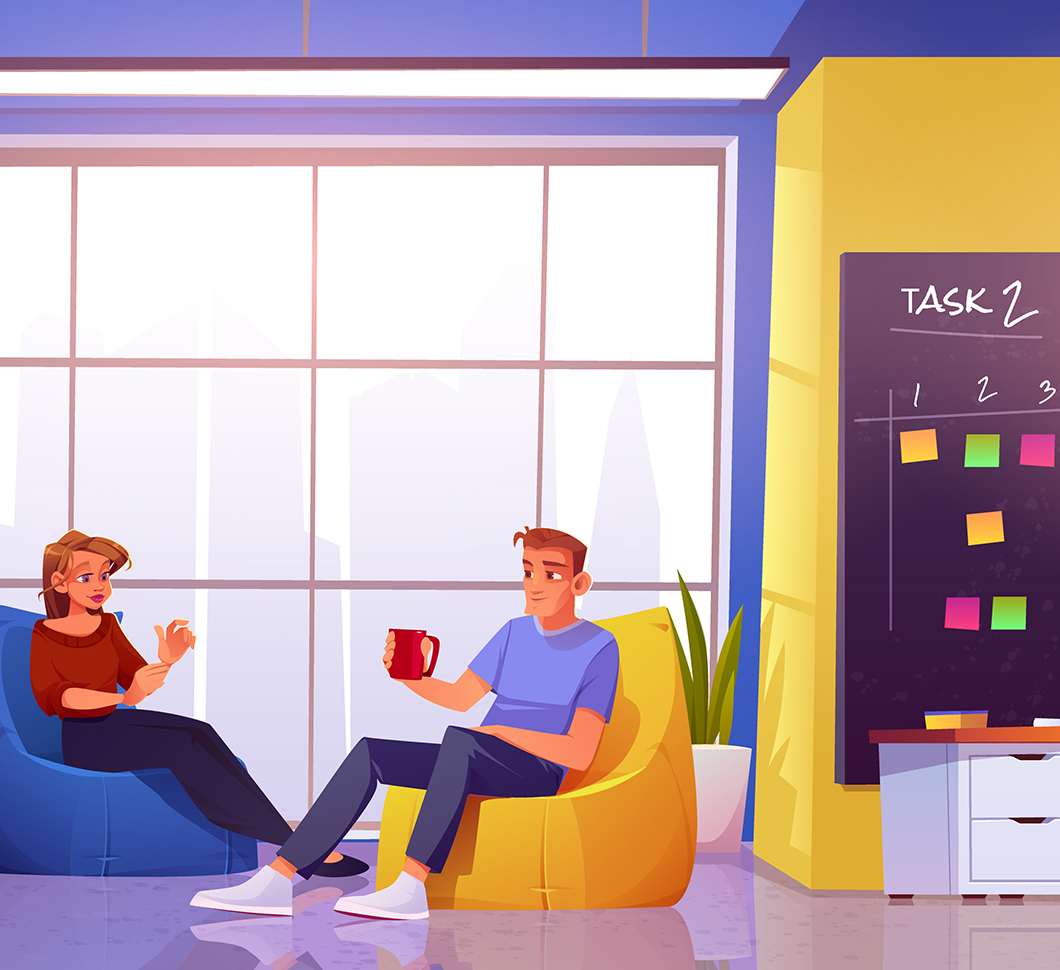 Key Trends Shaping Gamification in Recruitment for 2026 and Beyond
Key Trends Shaping Gamification in Recruitment for 2026 and Beyond  How to Create Crypto Casino Games the Right Way
How to Create Crypto Casino Games the Right Way 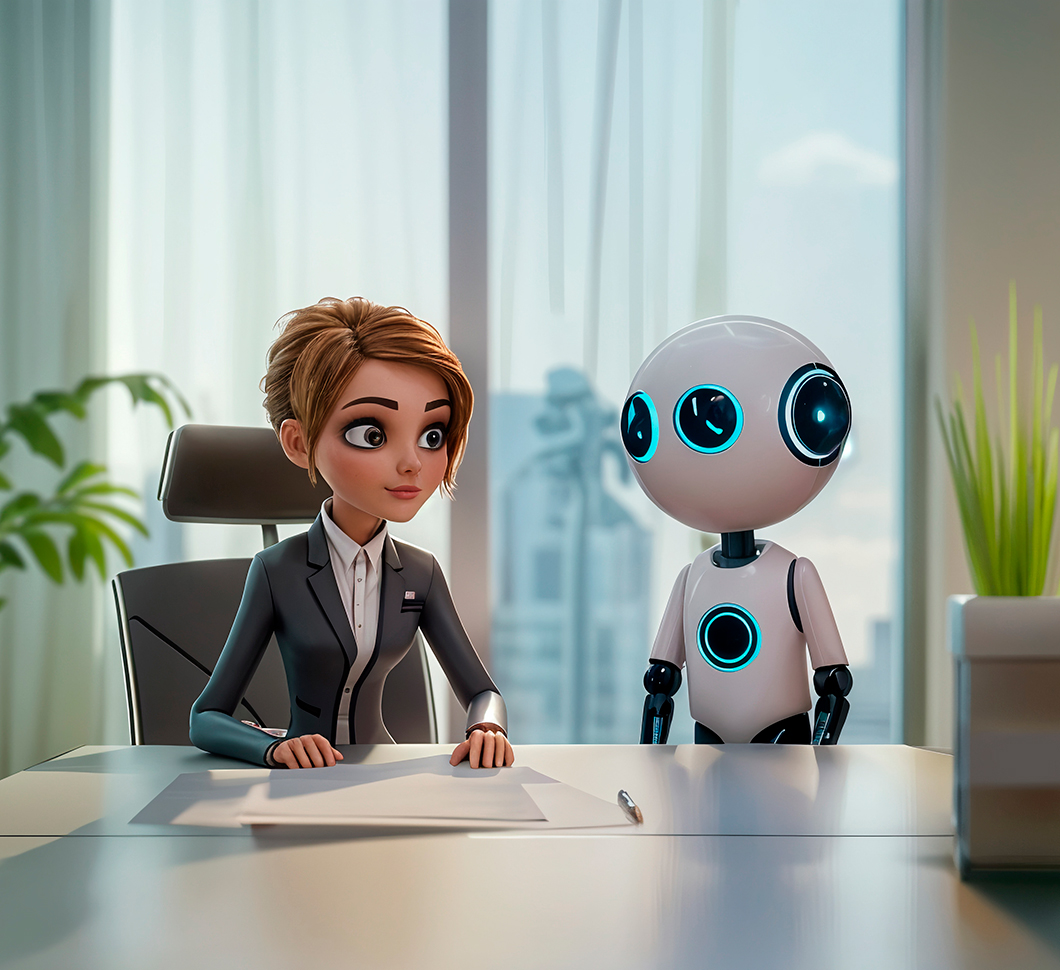 AI Recruitment Games: From Real-Time Assessments to Better Hiring Outcomes
AI Recruitment Games: From Real-Time Assessments to Better Hiring Outcomes  Games for Business: Proven Strategies for Engagement and Growth
Games for Business: Proven Strategies for Engagement and Growth 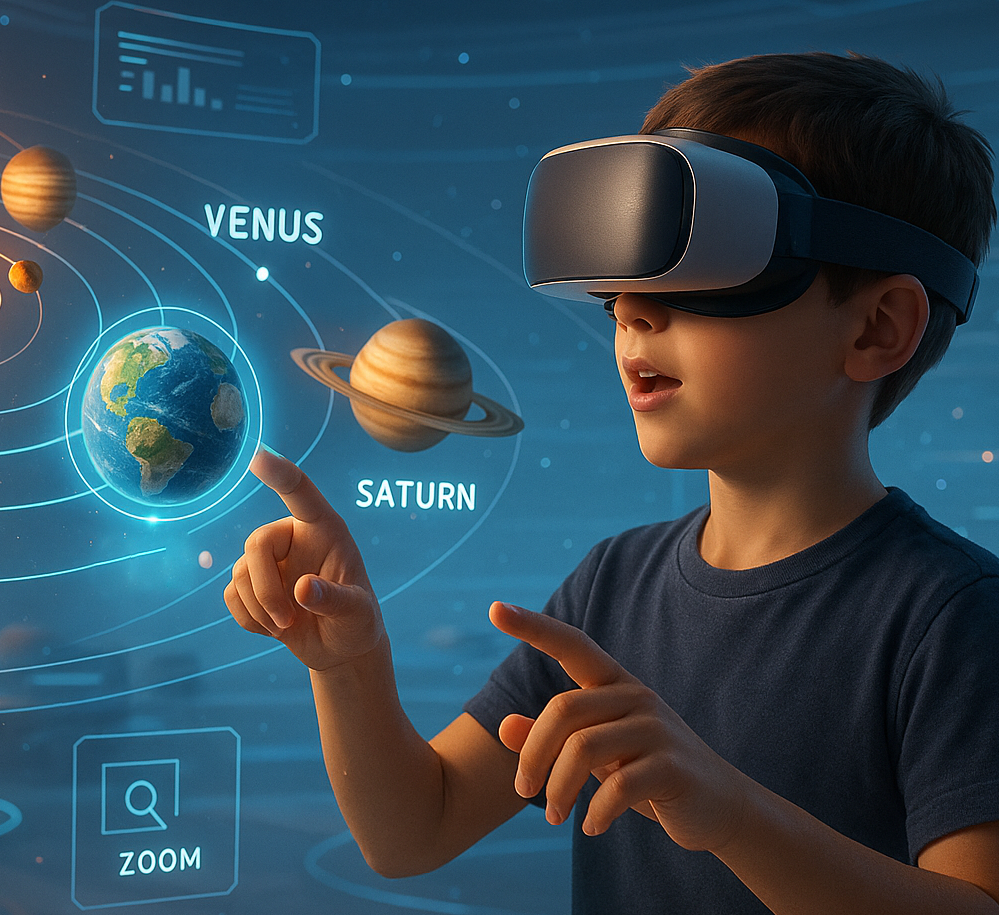 How to Design Learning Games for Kids That Teach Real-World Skills
How to Design Learning Games for Kids That Teach Real-World Skills 